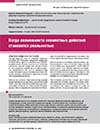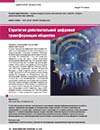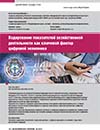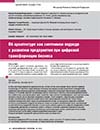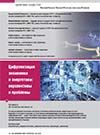Role of the Industrial Complex for the Country’s Sovereignty in the New World Order and Emergence of the IT Industry After Digital Transformation of Society
DOI: 10.33917/es-1.167.2020.82-91
The quality of industrial complex (IC) is crucial for the country’s sovereignty and the living standard of people in the context of survival and development in the new world order. Therefore, IC is increasingly becoming an object of competition and an instrument of some countries’ pressure on the other. However, the terms “industry” and “industrial complex” in the scientific economic community and government bodies do not have a generally accepted scientific definition. It is important to understand that the IT model of a developed state, with regard to digital transformation, should also include IT and a socio-strategic unit. Given these factors, the structure of an ideal IC model of a developed state in the emerging information society is proposed. The IC structure, along with industrial groups A and B (the means of production and consumer goods) includes new industry groups: C + D groups (manufacturing universal products — energy-electricity and information-knowledge) and X group (production of public and collective goods contributing to the state goals).




